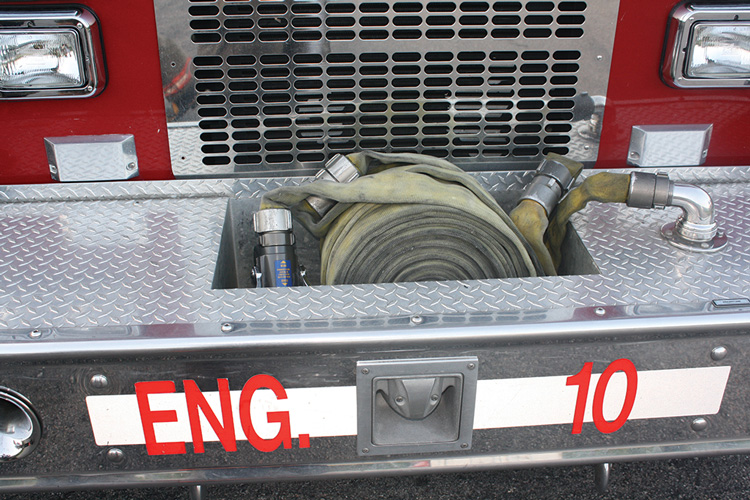
By Thomas Bradley
There are many ways to pack and deploy the front bumper preconnect handline on your apparatus. Here is a versatile, easy-to-pack, and easy-to-stretch system based on a tried and true method.
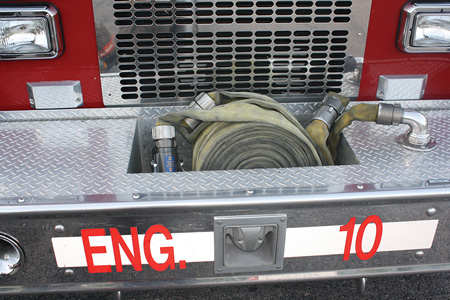 |
| (1) View of the line packed in the hose well of the front bumper. (Photos by author.) |
Many apparatus are being ordered and delivered these days without a red rubber “booster” line mounted on a hose reel. Most departments use a short (50- or 75-foot) “trash” line stored in their front bumper to handle mulch, trash, and other “nuisance” fires. Anything over this distance usually necessitates pulling the full 150- or 200-foot preconnect.
This line is also often used for vehicle fires, which presents some problems. It puts the apparatus much too close to the involved vehicle. Many times, apparatus are positioned downhill or downwind of the fire to make the short line reach because “that’s what we always use.” It can also result in parking the apparatus in a less than ideal position for blocking traffic.
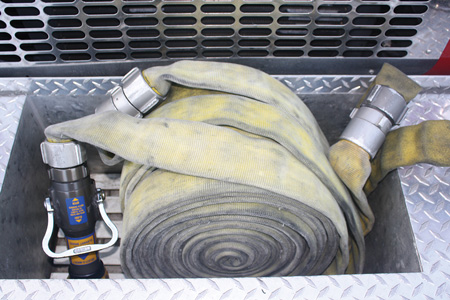 |
| (2) Close-up view of the three rolls connected and packed. |
“Donut-Roll” System
For years, the Peace Dale Fire Department (Station 1, Union Fire District of South Kingstown, Rhode Island) used a combination of an accordion pack with a rolled shot on the front bumper preconnect with great success at vehicle and structure fires.1 Having 150 feet of hose ready to go straight forward off the truck can be very useful at times. However, accordion packing 100 feet of hose can be time consuming; tedious; and, depending on who is doing it, a little sloppy. Also, since the engine does not have a red rubber “booster” line, it means that the 150-foot line must be fully deployed if the distance for mulch, trash, and other nuisance fires is more than 50 feet.
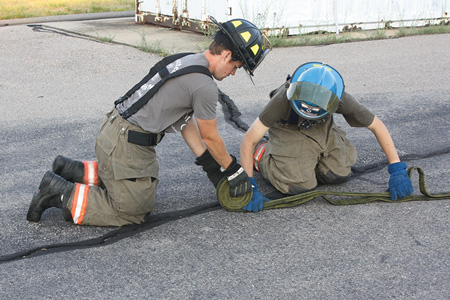 |
| (3) The firefighter is beginning the “donut” roll. |
Basically, we pack our hose in three “donut-rolled” shots connected in a series (photos 1-2). This system enables us to quickly deploy 50, 100, or 150 feet of hose. If less than 150 feet is needed, break the connection at the discharge at the desired length and reconnect to the discharge. To repack when you are done, donut-roll the hose male side up with the male end 12 to 18 inches short of the female (photo 3), replace in the hose well, and reconnect. Packing the hose this way also has a side benefit of making extra hose easily accessible to extend other handlines if needed. Just uncouple the hose and add it to the crosslay.
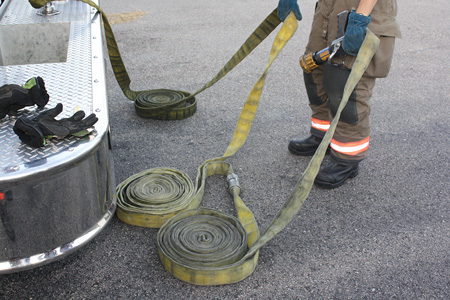 |
| (4) The firefighter is preparing to deploy 150 feet of line. He lays the three rolls on the ground and grabs the coupling between the second and third shot of hose. The nozzle is in his other hand. |
To deploy with a single firefighter, lay the rolls on the ground (photo 4), grab the 50- or 100-foot coupling (photos 5-6, respectively), and head to the fire. The hose unrolls and allows you to advance it smoothly. I also want to stress: Use the full 150 feet for fires of any significance, especially if you have to pull past the fire and stretch behind the truck to be in a proper position. Don’t turn your apparatus into an expensive exposure.
 |
| (5-6) The firefighter walks out holding the nozzle and coupling. As the hose unrolls, he will drop the coupling and continue to walk the nozzle to the fire. |
I compliment my fellow firefighters for taking a method that has worked very well for years and adapting it to fit our needs even better. Never stop looking for ways to improve how you perform your job.
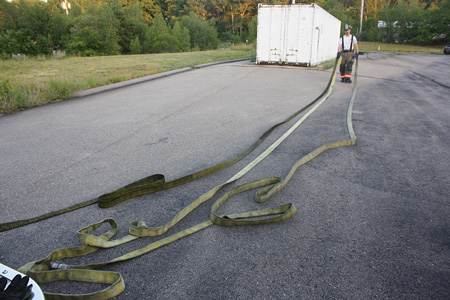
Reference
1. For additional information, see “Front Bumper Preconnect Hoselines,” Jake Rixner, The Engine Company, Fire Engineering, February 2002, 22-24.
THOMAS BRADLEY has served with the Peace Dale Fire Department in South Kingston, Rhode Island, for 27 years. He is an instructor for the Rhode Island State Fire Academy.
Firefighter Training: Preplanning Your Preconnects
Improving Preconnect Function and Operation
Making Preconnects Work
Fire Engineering Archives

